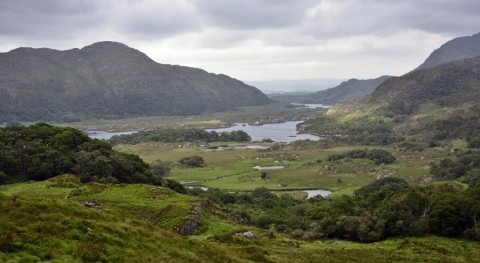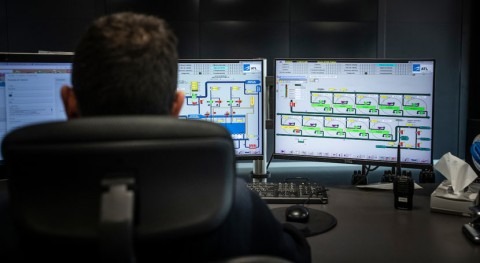While millions of people around the world marvel at Studio Ghibli-style AI-generated images or impossible portraits produced by tools such as DALL-E or Midjourney, few are aware of the hidden environmental cost behind these striking visuals: water.
Research from the University of California, Riverside and the University of Texas at Arlington, along with research published by The Washington Post, has highlighted a problem that has barely been considered until now: the massive consumption of freshwater needed to train and operate the artificial intelligence (AI) models behind these creations.
According to the study, training a single large language model such as GPT-3 can result in the evaporation of up to 5.4 million litres of water. This figure accounts for both server cooling (via water-based systems in data centres) and the water used indirectly in electricity generation.
This water footprint, hitherto invisible in technological debates, is further increased during the inference process - that is, when users generate content from the trained model. Every time someone generates an image or a textual response, small amounts of water are indirectly evaporated through the operation of huge data centres that operate non-stop, many of them powered by thermoelectric plants that also consume water intensively.
Iconic movie scenes, Studio Ghibli style. This is so much fun! pic.twitter.com/LwjkNjcEV9
— Mufaddal Durbar (@MDurbar) March 26, 2025
The study warns that, without significant changes, global water consumption attributable to AI will reach between 4.2 and 6.6 billion cubic metres by 2027, a figure equivalent to the entire annual water consumption of 4-6 countries such as Denmark, or half of the UK. More worryingly, these projections could be exceeded only by the water consumption of AI data centres in the US by 2028.
This outlook is especially critical in a context of global water crisis, with regions affected by prolonged droughts and rapidly ageing water infrastructure systems. Access to clean water has already become a factor of social and political tension in many regions, and the exponential growth of AI threatens to exacerbate this situation.
Why does AI consume water?
- Water consumption in AI is distributed on three levels:
- In the data centres themselves (water used to cool servers, evaporated in cooling towers).
- In electricity generation (thermal power plants consume water to cool their systems).
- In chip and server manufacturing (requiring ultra-pure water in highly polluting processes).
Large-scale data centres concentrate computational power in a few locations, creating intense thermal loads. Although some providers have shifted to “dry” cooling technologies, most still rely on systems that evaporate fresh, potable water to cool their servers—chosen to reduce the risk of pipe corrosion and bacterial growth.

Data processing centres consume water by using electricity from steam-generating power plants and by using on-site chillers to keep their servers cool.
Lack of transparency
One of the most significant findings of the study is the lack of transparency on these impacts. Unlike carbon emissions, which are already included in the so-called model cards of some AI models, water use is not reported in even minute figures. This omission, according to the researchers, limits efforts to develop more sustainable solutions.
Trade-offs are not enough: there is an urgent need to redesign model training and deployment practices so that these decisions are also based on water efficiency criteria.
There is also no reliable data on the water footprint of the hardware manufacturing process. It is known, for example, that semiconductor plants in places like Singapore have water recycling rates of less than 50%, and that the water used in these processes can contain toxic substances. Apple has admitted that 99% of its total water footprint comes from its supply chain.
Sustainable IA? Only if it is also ‘hydrosustainable’
Amid these revelations, some tech giants such as Google and Microsoft have pledged to reach a ‘water positive’ target by 2030, which means returning more water to the environment than they use. However, the study warns that trade-offs are not enough: there is an urgent need to redesign model training and deployment practices so that these decisions are also based on water efficiency criteria.
For example, training a model in Virginia or Texas, where the climate is milder and water use efficiency is higher, can significantly reduce consumption. Model training could also be scheduled during the cooler hours of the day, when the water requirement to cool the servers is lower. This type of planning, known as ‘follow the shade’ (as opposed to the traditional ‘follow the sun’ approach to reduce carbon emissions), poses a new dilemma: what is good for reducing carbon may be bad for water, and vice versa.
The paradox of the beautiful image
The popularisation of AI-generated images - many of them used for recreational or aesthetic purposes - brings an uncomfortable paradox to the table: while we gaze at a beautiful dreamscape generated by a model like Midjourney, the equivalent of a bottle of clean water could have evaporated in a region where this resource is scarce.
Artificial intelligence faces a fundamental contradiction: its promise to solve the world's big problems, such as climate change, could be overshadowed by its own hidden environmental impact. AI's hitherto ignored ‘thirst’ can no longer be overlooked.

















